What Is The Tail Of The Cat Compared To?
Nothing is more delightful than returning home after a long day to see your cats cooing with joy and holding up their tails as if to say, "Welcome back! We really missed you!" However, your cat's tail serves much more purposes than merely illuminating her emotional state. Read on for some cool facts about the tail of the cat and what it does.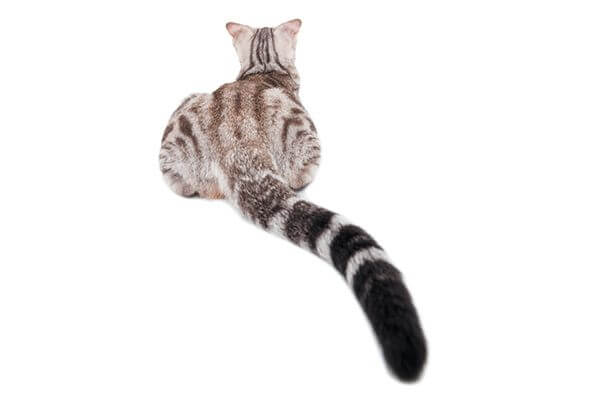
The tail is an extension of the spine. While the human spine terminates at the pelvis, in animals, including cats, the spine extends rearward for an additional 18 to 23 tiny bones or 20 to 30 cm. The average tail length of a cat is 25 cm (10 inches) for females and 28 cm (11 inches) for males. Bigger breeds, like Maine Coons, can have tails as long as 40 cm (16 inches). The tail can be narrow in smaller, short-haired cats, or it can be thicker in larger, long-haired cats like Persians. Layers of connective tissue, blood arteries, muscle, skin, and fur cover the bones of the tail. The abundance of nerves in the tail allows cats to control both minute and massive movements. A cat's tail can move like a whip to strike with vigor or it can twitch or quiver almost imperceptibly.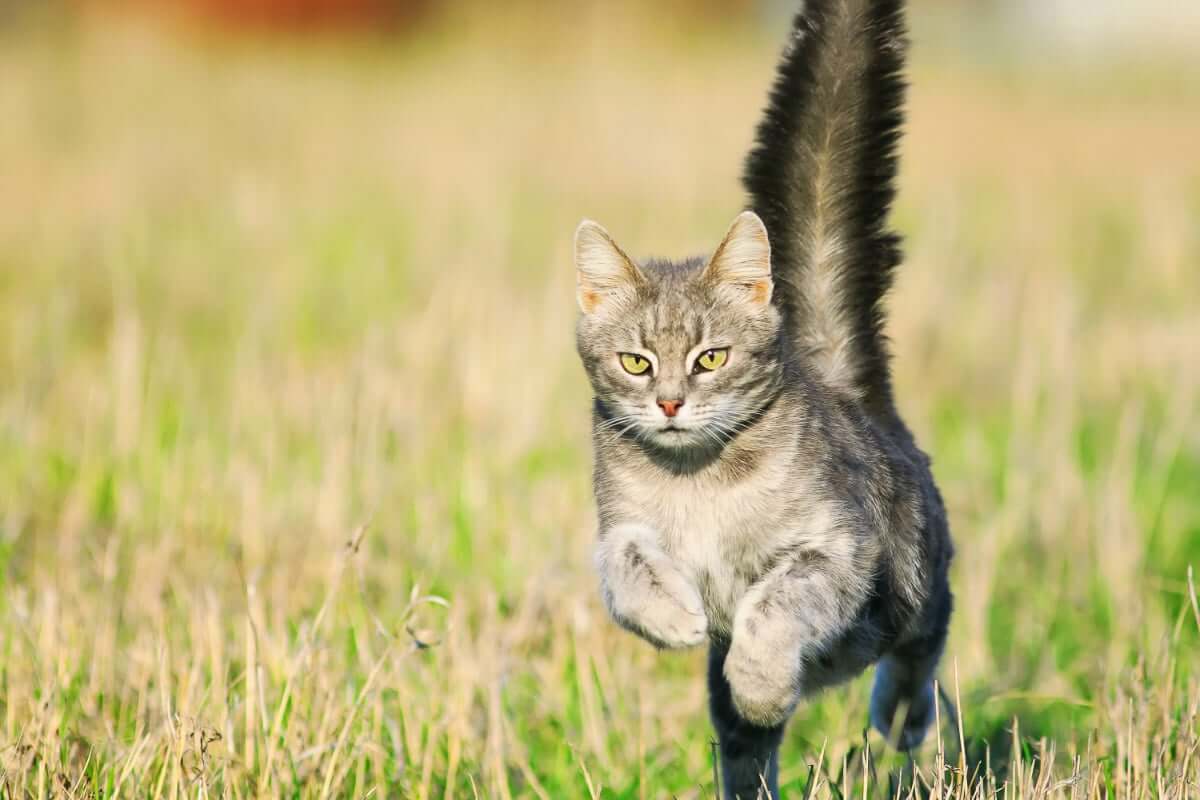
When your cat greets you at the door or as you fill the food dish, you've surely noticed that his or her tail is straight up. It frequently serves as their greeting and expresses joy. It’s also frequently accompanied by rubbing. So if you're walking around the neighborhood with your cat and you see that it has a straight tail, it means that your feline companion is content and eager for adventure.
A cat is concentrating and waving its tail back and forth slowly as it prepares to pounce! This behavior is indicative of fluffy angel kitty playfulness, so insects, cat toys, or your wiggling toes should be prepared.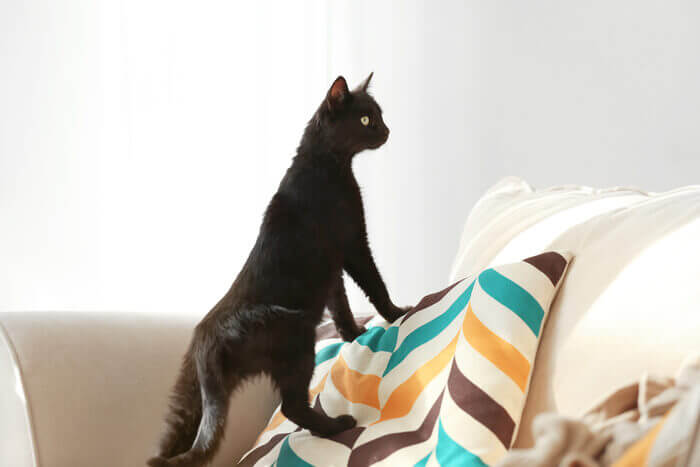
A playful cat will wag or flick its tail slowly, whereas an irritated or distressed cat will do so quickly. During veterinary visits, this behavior is frequently observed. Your cat is more likely to act aggressively if you observe it with a low, flicking tail because it's upset or terrified.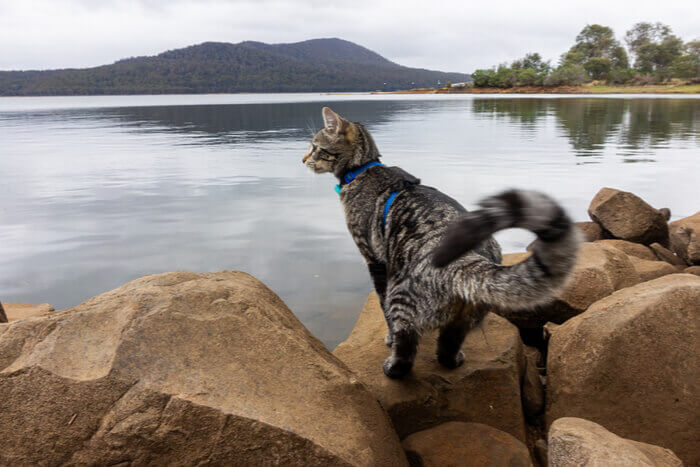
A cat standing with his or her tail tucked underneath the body is expressing a high degree of fear. The stomach of a cat is its most vulnerable part, and it is protected in this submissive stance. Your cat is letting you know that something in the environment is worrying them if they adopt this attitude while exploring.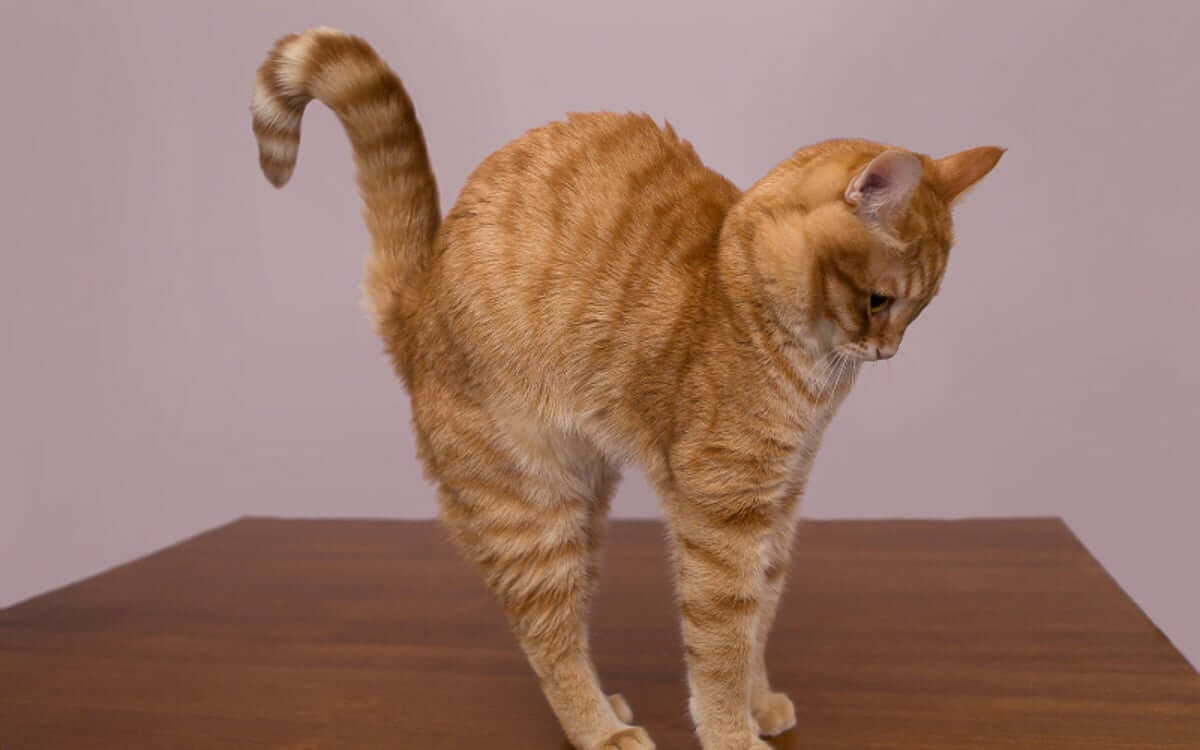
The "Halloween cat" posture is characterized by your cat's back is arched and tail puffed up. Your cat is scared and defending itself when you observe it in this stance.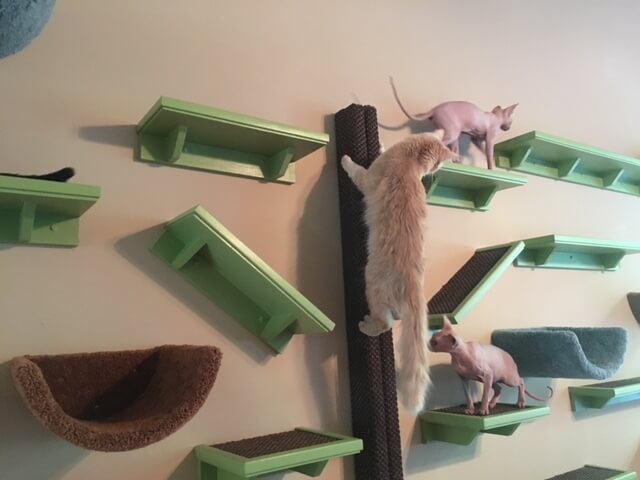
When a cat travels along narrow surfaces like fence tops or chair backs, its tail serves as a counterbalance. It also helps a running cat to stay standing as he makes sharp turns in pursuit of prey or his favorite toy.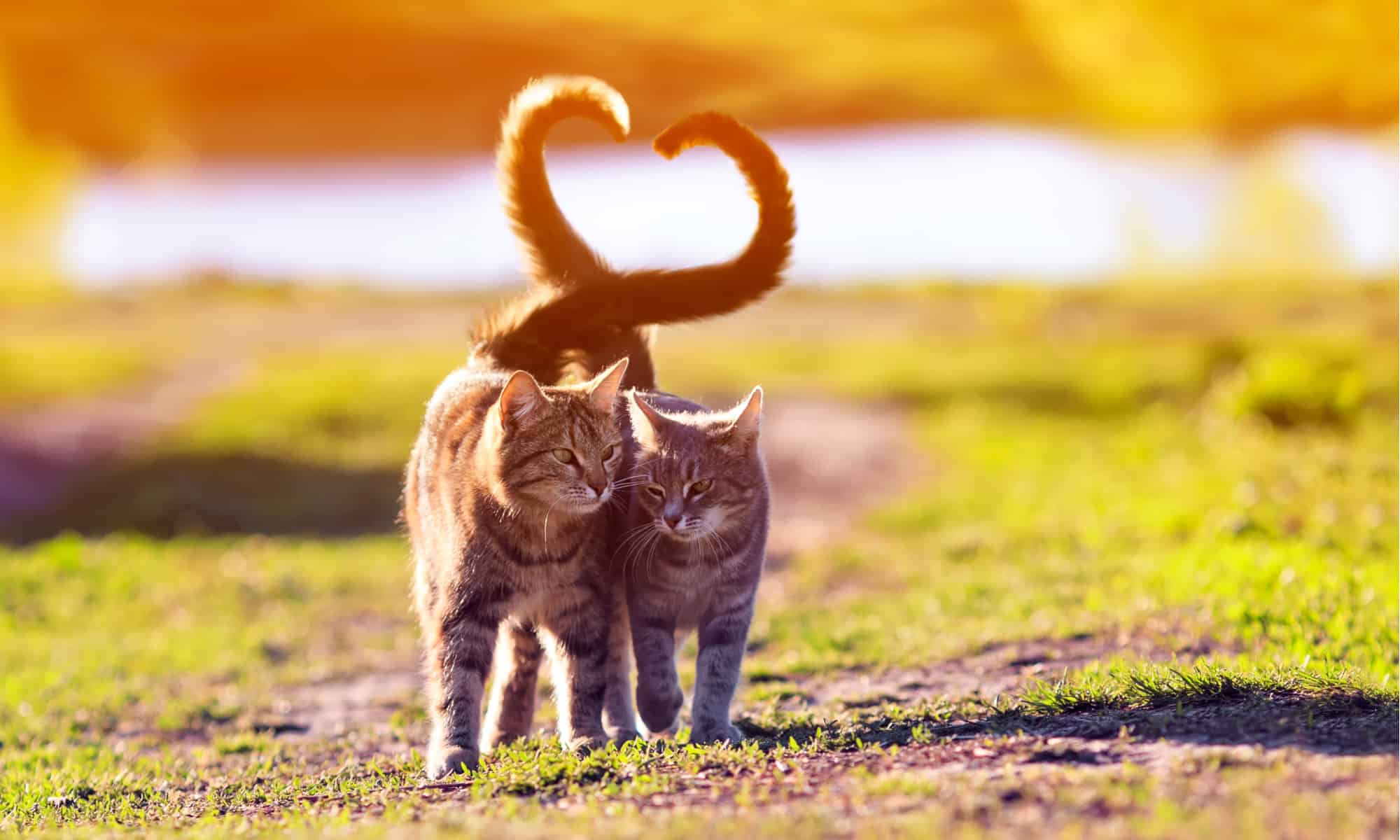
Cats primarily express themselves through body language, and one of the most crucial tools in your cat's toolkit is the cat tail. Knowing "tail talk," you may tell how your cat is feeling merely by looking at him.For example, a content cat would carry her tail high when walking, and a super-content cat will even add a quiver to her tail tip to show her excitement. A cat will occasionally twitch the tip of its tail to indicate moderate irritation, but if she starts whipping it back and forth, you'd better back away since the claws are about to emerge. The tail of a cat that is focused on prey will be held low to the ground, though there may be a very little twitch at the tip as she struggles to contain her enthusiasm.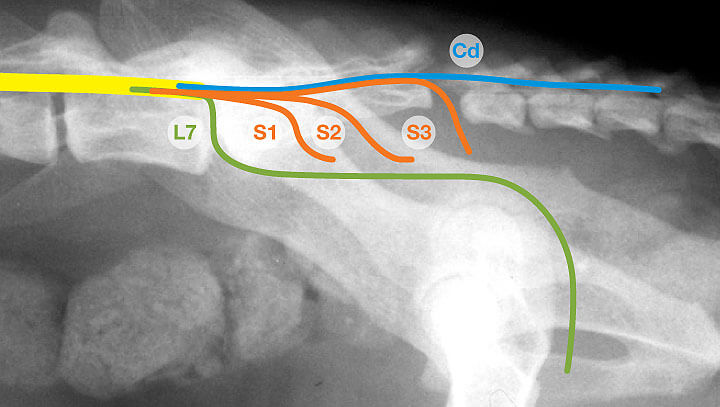
The spinal cord doesn't go all the way to the cat's tail, but an injury can still seriously harm the nerves there. When the spinal cord ends, the nerves that help to control and provide sensation to the tail, hind legs, bladder, large intestine, and anus have to extend outward without the protection of the spine’s bones. Yanking on your cat's tail may cause these nerves to become overstretched or even torn. That may result in a temporary loss of the ability to walk, an inability to hold the tail upright, incontinence, or persistent pain.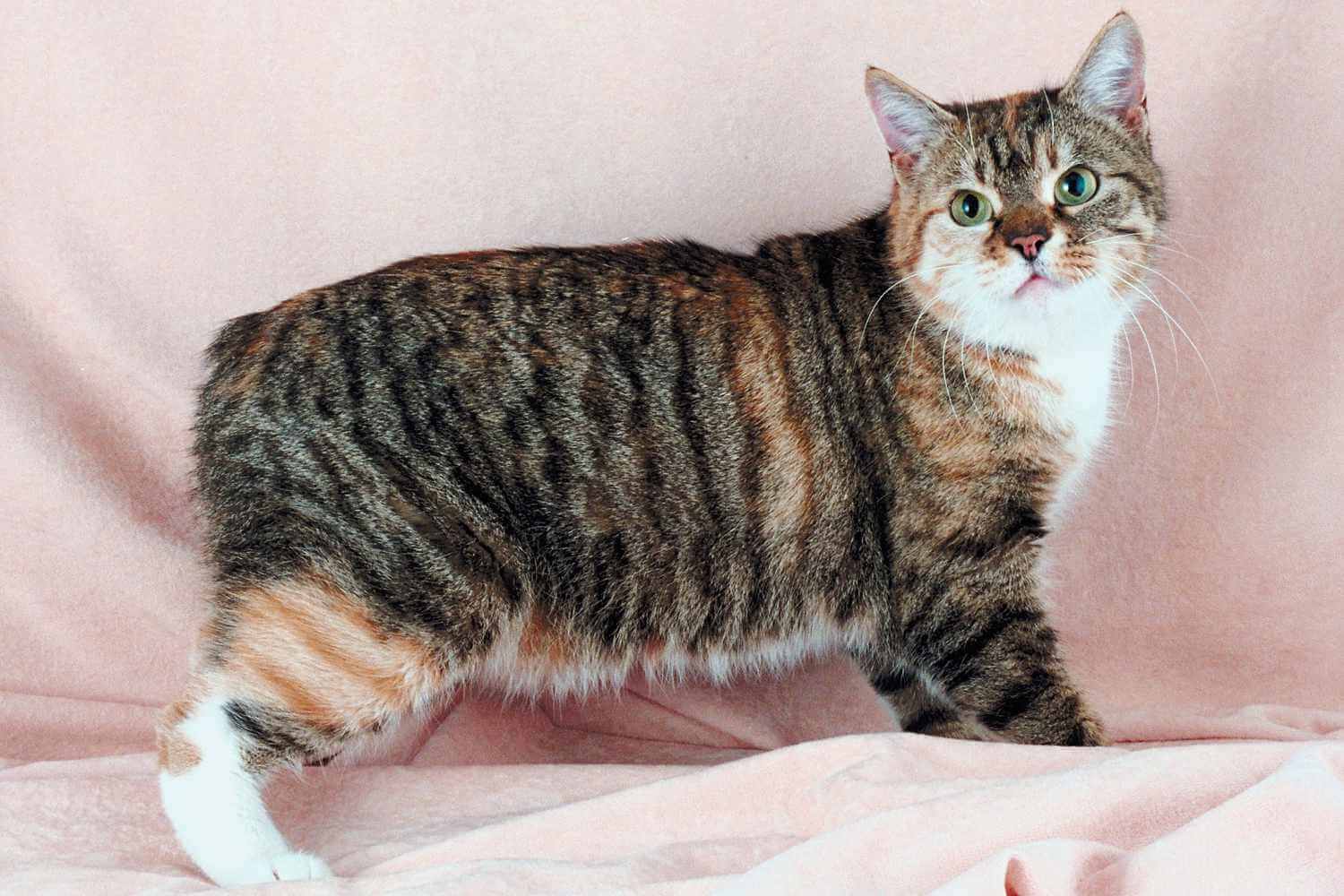
A cat that has had its tail removed due to an injury quickly learns how to make up for the loss. We've never heard of any instances of severe clumsiness with Manx cats, which are born without tails.
The dominant gene that causes the distinctive tailless appearance of the Manx automatically expresses itself even with only one copy of the gene. Being homozygous for (having two copies of) the tailless gene is semilethal, and kittens with two tailless genes are usually spontaneously aborted. So tailless Manx cats are bred from one tailless parent and one-tailed parent. A disorder known as Manx syndrome, which includes spina bifida, fused vertebrae, and bowel or bladder issues, can yet be brought on by having just one copy of the gene. However, unlike the Manx gene, which has the potential to create health issues, the gene that gives rise to the Japanese Bobtail's kinky, curly tail is recessive, requiring two copies in a cat in order for the trait to manifest.
Aubtu.biz is a website that provides you with entertainment information and creative ideas to refresh your days. To know more about updated animal news, visit our site daily.
What Is A Cat's Tail?

The tail is an extension of the spine. While the human spine terminates at the pelvis, in animals, including cats, the spine extends rearward for an additional 18 to 23 tiny bones or 20 to 30 cm. The average tail length of a cat is 25 cm (10 inches) for females and 28 cm (11 inches) for males. Bigger breeds, like Maine Coons, can have tails as long as 40 cm (16 inches). The tail can be narrow in smaller, short-haired cats, or it can be thicker in larger, long-haired cats like Persians. Layers of connective tissue, blood arteries, muscle, skin, and fur cover the bones of the tail. The abundance of nerves in the tail allows cats to control both minute and massive movements. A cat's tail can move like a whip to strike with vigor or it can twitch or quiver almost imperceptibly.
What Can Your Cat’s Tail Tell You?
#1. The tail of the cat is straight up

When your cat greets you at the door or as you fill the food dish, you've surely noticed that his or her tail is straight up. It frequently serves as their greeting and expresses joy. It’s also frequently accompanied by rubbing. So if you're walking around the neighborhood with your cat and you see that it has a straight tail, it means that your feline companion is content and eager for adventure.
#2. The tail of the cat is swishing

A cat is concentrating and waving its tail back and forth slowly as it prepares to pounce! This behavior is indicative of fluffy angel kitty playfulness, so insects, cat toys, or your wiggling toes should be prepared.
#3. The tail of the cat is flicking

A playful cat will wag or flick its tail slowly, whereas an irritated or distressed cat will do so quickly. During veterinary visits, this behavior is frequently observed. Your cat is more likely to act aggressively if you observe it with a low, flicking tail because it's upset or terrified.
#4. Cat’s tail tucked while standing

A cat standing with his or her tail tucked underneath the body is expressing a high degree of fear. The stomach of a cat is its most vulnerable part, and it is protected in this submissive stance. Your cat is letting you know that something in the environment is worrying them if they adopt this attitude while exploring.
#5: Puffy tail and arched back

The "Halloween cat" posture is characterized by your cat's back is arched and tail puffed up. Your cat is scared and defending itself when you observe it in this stance.
5 Cool Cat Tail Facts
#1. The tail of the cat is a balancing tool

When a cat travels along narrow surfaces like fence tops or chair backs, its tail serves as a counterbalance. It also helps a running cat to stay standing as he makes sharp turns in pursuit of prey or his favorite toy.
#2. It’s a communication aid

Cats primarily express themselves through body language, and one of the most crucial tools in your cat's toolkit is the cat tail. Knowing "tail talk," you may tell how your cat is feeling merely by looking at him.For example, a content cat would carry her tail high when walking, and a super-content cat will even add a quiver to her tail tip to show her excitement. A cat will occasionally twitch the tip of its tail to indicate moderate irritation, but if she starts whipping it back and forth, you'd better back away since the claws are about to emerge. The tail of a cat that is focused on prey will be held low to the ground, though there may be a very little twitch at the tip as she struggles to contain her enthusiasm.
#3. Cat’s tail injuries can cause permanent damage

The spinal cord doesn't go all the way to the cat's tail, but an injury can still seriously harm the nerves there. When the spinal cord ends, the nerves that help to control and provide sensation to the tail, hind legs, bladder, large intestine, and anus have to extend outward without the protection of the spine’s bones. Yanking on your cat's tail may cause these nerves to become overstretched or even torn. That may result in a temporary loss of the ability to walk, an inability to hold the tail upright, incontinence, or persistent pain.
#4. Cats can live without tails

A cat that has had its tail removed due to an injury quickly learns how to make up for the loss. We've never heard of any instances of severe clumsiness with Manx cats, which are born without tails.
#5. Not all tailless cats have the same tailless gene

The dominant gene that causes the distinctive tailless appearance of the Manx automatically expresses itself even with only one copy of the gene. Being homozygous for (having two copies of) the tailless gene is semilethal, and kittens with two tailless genes are usually spontaneously aborted. So tailless Manx cats are bred from one tailless parent and one-tailed parent. A disorder known as Manx syndrome, which includes spina bifida, fused vertebrae, and bowel or bladder issues, can yet be brought on by having just one copy of the gene. However, unlike the Manx gene, which has the potential to create health issues, the gene that gives rise to the Japanese Bobtail's kinky, curly tail is recessive, requiring two copies in a cat in order for the trait to manifest.
Aubtu.biz is a website that provides you with entertainment information and creative ideas to refresh your days. To know more about updated animal news, visit our site daily.